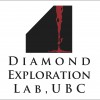2020/2021 Season:
| Date | Speaker | Title | Abstract |
|
September 30, 2020 |
David Sacco, M.Sc. 
|
Drift prospecting for kimberlite in the Slave Geological Province: why your KIM-bearing sediment samples may not be leading you to kimberlite |
Drift prospecting has been used for decades in the Slave Geological Province, NWT, to identify kimberlite indicator mineral and geochemical dispersals. These dispersals, in conjunction with geophysics and drilling, have led to many kimberlite discoveries. The sources of most well-defined dispersal patterns have been identified, and exploration must now focus on inauspicious regions where primary dispersal from kimberlite has been obscured by post-depositional changes to the landscape. Detailed surficial interpretations from readily available, high-resolution imagery and digital elevation data are a powerful asset when working in these challenging environments. Interpretations tailored to exploration provide the necessary context to unravel the complexities in the surficial geology and reconcile complex dispersal patterns. This presentation will demonstrate how the understanding and recognition of unique depositional environments and post-depositional modification of sediments can provide new insight into historical data, reduce the effort and resources required to collect new high-quality samples and inform data evaluations, ultimately providing lower-risk exploration targets. |
|
November 2, 2020 |
Margo Regier, PhD 
|
Distinct diamond-forming mechanisms in the lithosphere, asthenosphere, and lower mantle |
‘Superdeep’ diamonds from the sublithospheric mantle (>250 km in depth) comprise some of the most highly-priced samples in kimberlitic diamond deposits. These superdeep diamonds are distinguished from their more common lithospheric diamonds cousins by their large sizes, highly resorbed morphologies, and characteristic inclusion assemblages. Despite these defining characteristics, our understanding of superdeep diamond formation remains limited. How exactly does diamond formation differ between the upper and lower mantle? In this presentation, I will discuss how stable isotopic analyses of lithospheric to lower mantle diamonds can elucidate the various diamond forming mechanisms that operate at these depths. I will show evidence for diamond-forming carbonate-rich magmas in the transition zone and will illustrate how the final dehydration of slabs may remobilize carbon trapped in metallic phases in the lower mantle. |
|
December 3, 2020 |
Brooke Clements, Craton Minerals LTD. 
|
Diamond exploration in COVID-19 times: challenges and opportunities |
The great diamond discoveries in the NWT in the early 1990s ignited an unprecedented wave of diamond exploration throughout the world focused mainly on Canada. Seven Canadian mines have produced diamonds since 1998 and in 2019, Canada delivered 13% of the world’s diamonds by value. Though supply is projected to decrease and demand increase in the coming years, raising capital for diamond exploration is increasingly difficult due to a number of factors including: no recent economic discoveries, flat prices for rough diamonds, uncertainties around COVID-19 and several projects missing revenue projections. There will always be demand for high-quality natural diamonds and exploration is needed now to identify new deposits. Things that could lead to more exploration include: new sources of capital including private equity, a great new discovery to excite markets, a strong economic recovery after COVID-19 leading to demand finally exceeding supply, and development of new exploration methods that could lead to earlier identification of deposits with high-value (Type II) diamonds. |
|
February 24, 2021 |
Nichole Meyer, PhD 
|
Diamonds and Their Inclusions From The Koffiefontein Pipe Provide Insights Into the Formation and Evolution of the Kaapvaal Craton |
Diamonds and their mineral inclusions preserve mantle processes over space and time. Forming over a protracted period, diamonds also provide snapshots of early craton formation and mantle evolution over much of Earth’s history. The lithosphere beneath Koffiefontein is extremely depleted and is characterised by high-Mg# olivine and low-Ca garnet. In addition to garnet LREE enrichment, Koffiefontein experienced a unique K-Nb-Ta-rich metasomatism event that resulted in new minerals. The lack of clinopyroxene and coexisting garnet-orthopyroxene assemblages lead to the use of the electron microprobe for trace element analysis of Al in olivine. Geothermobarometry indicates that upper mantle diamond formation conditions are 1100 -1300 deg. C and 4-7 GPa. Koffiefontein diamonds have amain Delta 13C mode for both peridotitic and eclogitic diamonds similar to mantle carbon. Relationship of Delta15N and Delta13C indicate that nitrogen was derived from subducted sources and suggests that formation of not only eclogitic but also peridotitic diamonds involved fluids derived from altered oceanic crust. Lower mantle diamonds with coexisting ferropericlase and former bridgmanite indicate formation at or below 660 km. The high bulk Mg# of this assemblage is consistent with the diamond substrate from the depleted lithospheric mantle portion of an oceanic slab. Diamond formation at Koffiefontein dominantly takes place in depleted peridotite at both lithospheric and lower mantle depths. The Delta13C-Delta15N systematics suggest the same subducted source for both peridotitic and eclogitic diamonds. Subduction has played an important role in the formation and evolution of the Kaapvaal Craton and subsequent diamond formation. |
|
March 30, 2021 |

Dr. Jose Paulo Donatti-Filho (Geology and Exploration Manager)  |
Brauna 3 mine - South America's first diamond mine developed on a kimberlite deposit |
Brazil hosts 1365 kimberlite or kimberlite-like bodies, as well as alluvial diamond deposits that have historically produced the bulk of Brazil's diamond production. Only five kimberlites have been subjected to bulk sampling evaluation using cureny exploration techniques and diamond recovery technology. The first of these kimberlite deposits to reach commercial production was the Brauna 3 kimberlite, with U-Pb age of 642±6 Ma elocated in the State of Bahia and owned and operated by Lipari Mineracao Ltds. The brauna mine commenced commercial production in 2016 at a capital cost of US $ 65 million, and to date has produced approximately 830,000 cts at an average recovered diamond grade of 21 cpht. The Brauna cluster features two pipe-like bodies, Brauna 3 and Brauna 7, and 22 kimberlite dyke occurrences located on the NE part of the Sao Francisco craton. A robust geological model delineates the Brauna 3 kimberlite pipe to depths of 550 and 410 m below surface for the South and Central-North Lobes, respectively. The geological model reveals a issregularly shapes kimberlite pipe which is structurally controlled by the NW trending strutural lineaments. petrographuic study of the Brauna 3 kimberlite has identified volcaniclastic and coherent kimberlites coexisting in a complex root to diatreme transition zone. The kimberlite is mineralogically close to Group 2 kimberlite containing olivine, spinel, ilmenite, phlogopite, perovskite, apatite, melilite, serpentine, carbonate and sulfates. Geochemically, the Brauna 3 kimberlite is transitional between Group 1 and Group 2 rocks. |
|
April 27, 2021 |

Mr. Marty Podolsky - Associate Geologist, SRK Consulting, Vancouver, Canada |
Primary Diamond Asset Development Standard Model – Deposit to Reserve Desktop to Feasibility Governance Example – Gahcho Kué Mine, Northwest Territories, Canada |
A primary rock-hosted diamond Deposit to Reserve Asset Development Standard model governed under the 2014 Canadian Institute of Mining, Metallurgy and Petroleum definition standards on Mineral Resources and Reserves and 2016 Toronto Stock Exchange National Instrument 43-101 – Standards of Disclosure for Mineral Projects, is presented and discussed. The Gahcho Kué Mine De Beers Canada – Mountain Province Diamonds joint venture project roadmap from exploration commencing in 1992 to definitive Feasibility Study in 2010 is reviewed under the incorporated 2003 Guidelines for the Reporting of Diamond Exploration Results and 2008 Estimation of Mineral Resources and Mineral Reserves Best Practices Guidelines for Rock Hosted Diamonds. Karowe and Ekati-Sable diamond mines histories are also compared. The Asset Development Standard model utilizes a published De Beers system of kimberlite Deposit to Reserves geo-scientific scorecard classification, that is aligned with reporting of Desktop, Conceptual and Pre-Feasibility to Feasibility Studies. |
| May 25, 2021 | 
Hayden Dalton - PhD Candidate - The University of Melbourne, Australia |
Temporal evolution of kimberlite magmatism in Finland: An evaluation of geochronological methods commonly applied to kimberlites |
Despite their significance, there remains debate concerning the mantle sources of kimberlites and what triggers mantle melting to form these magmas. Robust determination of the timing of kimberlite eruption is a crucial prerequisite if we are to unravel the presence of any spatiotemporal relationships between kimberlite emplacement and large-scale tectonic processes, super-continental cycles or mantle plumes. In this study, we applied the three most common radiogenic dating methods used to determine the emplacement ages of kimberlites and related rocks - Rb-Sr phlogopite, U-Pb perovskite and 40Ar/39Ar phlogopite. These techniques were applied to kimberlites, ultramafic lamprophyres and olivine lamproites from Finland, yielding the first published ages for kimberlite magmatism in this area and permitting insights into the evolution of kimberlite and related activity. In addition, by applying multiple ( up to 3) geochronometers to single samples, we have been able to compare and evaluate each method for returning robust age constraints. Overall, there is good agreement between the three geochronometers, however, the ultimate geochronometer of choice will rely on the freshness, abundance and size of datable material. Wherever possible, the application of multiple geochronometers is recommended. |














